June, 2007

From MyLovelyBeads.com TeamYES! We started MyLovelyBeads.com newsletter and here is our first issue. Our website is about gemstone and beaded jewelry; and the newsletter will tell you some facts about jewelry traditions and about jewelry trends. We will keep you informed about our site news and sales, and special offers, about upcoming events and shows. We respect your opinion and would appreciate hearing suggestions concerning this newsletter, improvement of our beadwork and service, and website. You can contact us at info@mylovelybeads.com. Best regards,
MyLovelyBeads.com Team |
Pearl. FAQ
Saltwater pearls are found in oysters in parts of the oceans and other bodies of saltwater around the world. The most well know places are the Philippines, Indonesia, Thailand and Burma in South East Asia. Other well known pearl growing areas are near the Arabian Sea in the Persian Gulf, the Red Sea and near Sri Lanka. Tahiti pearls are the largest pearls, they are found in the South Pacific (Australia and Tahiti). Here you will also find the beautiful black pearls. Akoya pearls are the smaller saltwater pearls, which traditionally have been associated with Japan but which can be found many other places in Asia. Freshwater pearls are found growing in mussels living in lakes and streams all over the world including the USA and Europe. These pearls tend to be less expensive than saltwater pearls even in the same size and color. Biwa pearls are the best known, and probably the best quality as well as the most expensive freshwater pearls, they are cultivated in Lake Biwa in Japan. Due to pollution, the production of authentic Biwa pearls has dropped sharply and many of the so called Biwa pearls you see actually come from many other places. Cultured pearls are not a natural pearl. A tiny irritant like a bead, grain of sand, or a piece of mother of pearl from another mollusk can be inserted into the opening of an oyster or mollusk. It can take five to seven years to secrete enough nacre to cover this irritant to produce a jewelry quality pearl. You can see the saltwater pearl farm on Seram, Indonesia, on the picture. |
|
New on MyLovelyBeads.com
• Eyes Color and Stones Match
• The Beading Craft: An Old and New Tradition • Handcrafted Beaded Jewelry - A Timeless Classic |
|
Featured artist
|
|
Casual remarkIt seems, a man is getting more and more conceited. Or the feeling of beauty disappears... Look at the gemstone names. The name Diamond derives from the ancient Greek ADAMAS: invincible. The name Amethyst comes from the Greek A ("not") and METHUSKEIN ("to intoxicate"), a reference to the belief that the stone protected its owner from drunkenness. And so on. What about modern names? Uvarovite is named after Count Sergei Semenovitch Uvarov (1765-1855), a Russian statesman. Morganite is named after J.P.Morgan, the famous financier. Kunzite is named in honor of New York mineralogist and gemologist George Frederick Kunz. The old names seem to be more colorful and romantic! |
|
Do you know?
A bead is a small, decorative object that is pierced for threading or stringing. As an alternative to piercing, plastic beads may be molded onto a thread during manufacturing. Beads range in size from under a millimeter to over a centimeter or sometimes several centimeters in diameter. Glass, plastic, and stone are probably the most common materials, but beads are also made from bone, horn, ivory, metal, shell, pearl, coral, gemstones, polymer clay, metal clay, resin, synthetic minerals, wood, ceramic, fiber, paper, and seeds. Beadwork is the craft of making things with beads. Beads can be woven together with specialized thread, strung onto thread or wire, or adhered to a surface (e.g. fabric, clay).
A pair of beads made from Nassarius shells that are approximately 100,000 years old are
thought to be the first known examples of jewelry. Read more about beads history:
|
© 2010 MyLovelyBeads.com All Rights Reserved.
If you do not want receive our newsletter and you wish to remove your email address from our mailing list, please click the following link to unsubscribe.




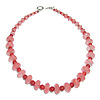
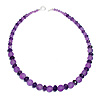
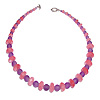
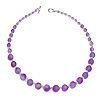
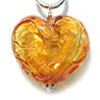
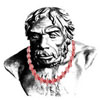 The art of self adornment is as old as man. Beadwork is among the most ancient types of
jewelry. Through the ages, beads have changed and improved, giving rise to improvements in
beadwork techniques. Today beadwork is enjoying a renaissance, and continues to increase
in popularity.
The art of self adornment is as old as man. Beadwork is among the most ancient types of
jewelry. Through the ages, beads have changed and improved, giving rise to improvements in
beadwork techniques. Today beadwork is enjoying a renaissance, and continues to increase
in popularity.